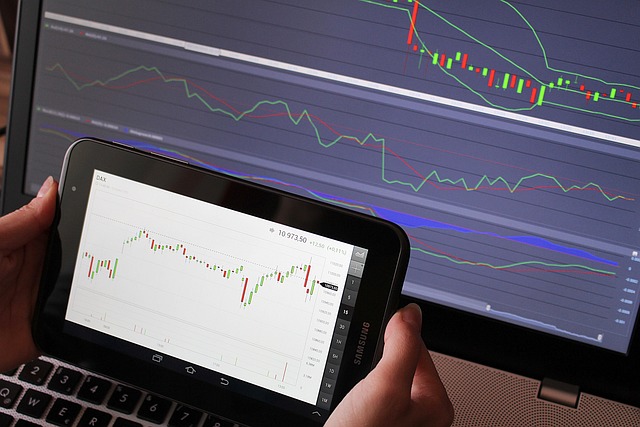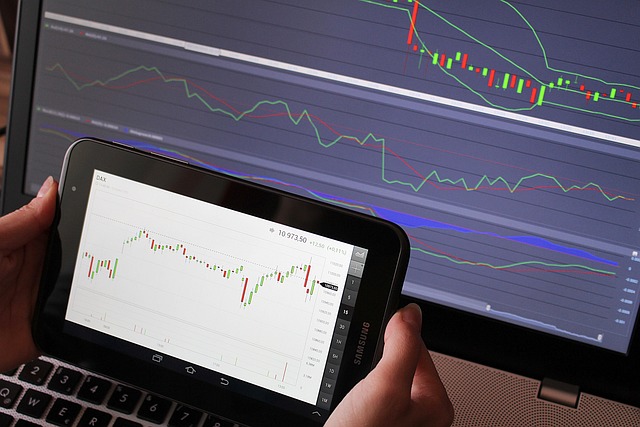Which Trading Robot Is the Best for Your Strategy
Author: Jameson Richman Expert
Published On: 2025-11-07
Prepared by Jameson Richman and our team of experts with over a decade of experience in cryptocurrency and digital asset analysis. Learn more about us.
Which trading robot is the best depends on your goals, markets, risk tolerance, and technical comfort. This article walks you through the evaluation criteria, compares top trading bots (crypto and multi-asset), explains setup and risk controls, and offers actionable steps to choose, test, and optimize a trading robot that fits your needs. Read on for practical comparisons, security tips, backtesting best practices, and recommended resources to get started safely.

Why the question “which trading robot is the best” has no one-size-fits-all answer
Many people expect a single “best” robot. In reality, the ideal trading robot varies by:
- Market: crypto, forex, stocks, or futures require different features (e.g., 24/7 trading for crypto).
- Strategy: scalping, trend-following, mean reversion, arbitrage, or market-making.
- Technical skill: plug-and-play platforms vs. programmable frameworks.
- Risk tolerance: aggressive return targets vs. capital preservation.
Therefore, this guide focuses on how to determine which trading robot is the best for you, and provides comparisons of popular options, practical setup/checklists, and metrics to evaluate real-world performance.
Core evaluation criteria: how to judge any trading robot
When comparing robots, evaluate the following baseline factors:
1. Strategy support and flexibility
- Can it implement your preferred strategy (trend, scalping, arbitrage, grid, dollar-cost averaging)?
- Does it allow custom scripting or only pre-built strategies?
2. Backtesting and forward-testing
- Quality of historical data and ability to simulate slippage, commissions, and latency.
- Support for walk-forward testing and paper trading.
3. Security and API handling
- How are API keys stored? Look for encryption and local-only storage.
- Ability to set read-only or trade-only permissions and IP whitelisting.
4. Exchange and asset coverage
- Does it integrate with the exchanges you use (Binance, Bybit, Bitget, MEXC, etc.)?
- Does it support spot, margin, and derivatives if you need them?
5. Reliability, latency, and infrastructure
- Uptime guarantees, cloud deployment options, VPS compatibility.
- Order execution speed matters for scalping and arbitrage.
6. Fees and cost structure
- Subscription, performance fees, or percentage of profit models.
- Hidden costs like VPS, data feed subscriptions, or additional API costs.
7. Community, support, and transparency
- Active community, public track records, and support documentation.
- Open-source projects provide auditability; closed-source platforms require trust.
Top trading robots and platforms compared (practical overview)
Below is a practical comparison of reputable options for crypto and multi-asset algorithmic trading. This is not exhaustive but highlights frequently recommended tools.
Crypto-focused bots and platforms
- 3Commas — User-friendly, supports smart trades, grid bots, DCA, and social/copy trading. Good for beginners to intermediate users. Backtesting is limited but the UI and exchange coverage are strong.
- CryptoHopper — Cloud-based, marketplace for strategies, supports backtesting, and copy trading. Suitable if you want a mix of DIY and marketplace strategies.
- Bitsgap — Good for grid and arbitrage across exchanges, strong demo trading. Focused on cross-exchange features.
- Gunbot — Desktop-based and highly configurable with many community scripts. Requires more hands-on tuning and familiarity with trading concepts.
- Zignaly — Emphasizes copy trading and signal providers; good for users who prefer following experienced traders rather than building their own strategies.
- HaasOnline — Advanced, scriptable, supports complex strategies and indicators. Geared toward experienced traders and developers.
General-purpose algorithmic trading frameworks
- Freqtrade — Open-source crypto trading bot written in Python. Excellent for developers who want full control, backtesting, and community support.
- ccxt + custom code — Using the ccxt library to integrate with exchanges and running custom strategies provides maximum flexibility but requires development resources.
- AlgoTrader / QuantConnect — More oriented to institutional or multi-asset quant strategies; offers backtesting and deployment for equities, futures, and crypto.

How to pick the best robot for your use case — step-by-step
Follow these steps to choose and validate the trading robot that is best for you.
- Define your objective: capital preservation, steady income, aggressive alpha, or diversification.
- Choose the market: crypto, forex, equities, or options. Market choice drives exchange and feature needs.
- Match strategy to bot: match required strategies—if you need market-making, select a bot with ping-pong and inventory management features.
- Check integrations: ensure direct API support for your exchange(s). For crypto, popular exchanges include Binance, Bybit, Bitget, and MEXC—open accounts on reliable platforms before configuring (you can use links to register: Binance, MEXC, Bitget, Bybit).
- Backtest thoroughly: test on multiple market regimes with realistic slippage and commission settings.
- Paper trade and small live positions: always run a period of forward testing on a paper or very small live account.
- Implement risk controls: max drawdown limits, position sizing, stop-losses, and kill switches.
- Monitor and iterate: monitor performance metrics and parameter drift; update strategy only after proven improvements across multiple cycles.
Practical example: choosing a crypto bot for swing-trading altcoins
Suppose you want a robot for swing trading altcoins on Binance with moderate risk tolerance. Here's a blueprint:
- Select a cloud-based bot with good altcoin coverage (3Commas or CryptoHopper).
- Backtest a trend-following strategy with a 4–14 day lookback using historical minute/hour data. Include slippage of 0.1–0.5% for altcoins.
- Use fixed fractional position sizing (e.g., 1–2% of account per trade) and a maximum daily loss limiter.
- Run paper trading for 4–8 weeks, then deploy with reduced size and gradually increase after stable performance.
- Use API keys with trade permissions only; disable withdrawal rights and enable IP whitelisting.
Backtesting best practices
Backtesting is critical but often misleading if done poorly. Follow these best practices:
- Use high-quality historical data (minute-level or tick data for high-frequency strategies). Public resources like Wikipedia explain the concept of backtesting and common pitfalls. See more on algorithmic trading fundamentals on Wikipedia.
- Simulate realistic costs: commissions, taker/maker fees, and network costs (withdrawals/gas) for crypto.
- Model slippage and latency: use conservative assumptions, especially for illiquid pairs.
- Avoid overfitting: prefer simple models with robust performance across different market regimes.
- Walk-forward and out-of-sample testing: reserve a portion of historical data for final validation.

Security checklist before you connect a bot to exchange accounts
- Use API keys with the least privilege: enable trading, disable withdrawals.
- Restrict IP addresses via exchange settings if the bot supports it.
- Store API keys securely: encrypted local storage or secure vaults; avoid pasting keys into untrusted web pages.
- Enable 2FA and account-level security on exchanges (Google Authenticator, hardware keys).
- Prefer vetted, open-source bots or established commercial providers with transparent security practices.
Costs and expected returns — be realistic
Every bot has costs: subscription fees, exchange fees, spread/slippage, and infrastructure (VPS). Expected returns vary widely by strategy. Typical rules of thumb:
- Conservative strategies (market making, hedged strategies): smaller but steadier returns (single-digit annualized returns in fiat terms unless leverage is used).
- Momentum and trend strategies during favorable regimes can outperform, but they also incur drawdowns and periods of underperformance.
- High-frequency and arbitrage require low latency and institutional-grade infrastructure—expect higher costs and complexity.
Always measure performance by risk-adjusted metrics such as Sharpe ratio, Sortino ratio, maximum drawdown, and CAGR rather than raw returns alone.
Copy trading and social strategies: when a robot isn't built by you
If you prefer following experienced traders, copy trading is an efficient option. Platforms like 3Commas and Zignaly support signal providers, and exchanges like Bybit provide copy-trading ecosystems. For a complete guide on copy trading on Bybit and how to maximize profitability, see this step-by-step resource: Comprehensive Guide on How to Copy Trade on Bybit for Maximum Profitability.

Case studies and resources
Analyzing other market research helps inform your strategy choices. For example, long-term outlooks on Bitcoin can shape whether you choose buy-and-hold automation or short-term bots. Read a long-term perspective here: Bitcoin Price Prediction by 2050 — Long-Term Outlook. For coin-specific trend analysis that might inform short- to mid-term robot strategies, see XRP Price Trend Prediction, Outlook & Strategies.
Example bot profiles: strengths and when to use them
3Commas
- Strengths: Easy UI, smart trades, DCA and grid, strong exchange integrations.
- Best for: Beginners to intermediate traders who want quick setup and copy trading features.
CryptoHopper
- Strengths: Marketplace for strategies, cloud deployment, backtesting and paper trading.
- Best for: Users who want a mix of DIY and marketplace strategies with minimal infrastructure setup.
Freqtrade (open-source)
- Strengths: Full control, programmable strategies, active developer community.
- Best for: Developers and quants who want transparency and flexibility.
HaasOnline
- Strengths: Highly configurable, supports complex strategies and indicators.
- Best for: Advanced users and professional traders who need granular control.
Monitoring and maintenance: the ongoing job
Deploying a bot is not “set and forget.” Good operational practices include:
- Daily/weekly checks on orders and P&L.
- Automated alerts for drawdowns or failed orders.
- Periodic parameter retuning—preferably based on rules and not emotional reaction to recent losses.
- Restart and fail-safe procedures: ensure a kill switch or circuit breaker in case of bugs or connectivity issues.

Common pitfalls and how to avoid them
- Over-optimization: Avoid fitting a strategy to every historical wiggle—simple robust rules often outperform complex overfit models when markets change.
- Leverage misuse: High leverage magnifies returns and losses; simulate leveraged strategies carefully and set strict margin controls.
- Poor risk management: No strategy is safe without position sizing and drawdown limits.
- Ignoring exchange risk: Exchanges can fail, freeze withdrawals, or delist coins. Diversify across trusted platforms and keep some funds in cold storage for long-term holdings.
Regulation and legal considerations
Laws differ by jurisdiction. Algorithmic trading may be subject to rules for market manipulation, licensing, or investor protection in some regions. For general context on financial regulation and investor safeguards, consult authoritative sources like the U.S. Securities and Exchange Commission (SEC) or the Financial Conduct Authority (FCA) depending on your jurisdiction. Always consult a licensed professional if you need tailored legal or tax advice.
Actionable checklist: how to start with a trading robot this week
- Create accounts on reputable exchanges. Useful registration links: Binance, MEXC, Bitget, Bybit.
- Select a bot type: hosted vs. self-hosted; marketplace vs. custom-coded.
- Download or subscribe and connect to exchange via API (trade-only, no withdrawal key).
- Backtest the strategy with conservative assumptions and hold out a validation window.
- Paper trade for a minimum of 4–8 weeks across different volatility conditions.
- Deploy with a small allocation and monitor metrics (drawdown, win rate, Sharpe ratio).
- Scale gradually only after consistent results; log all changes and maintain version control for code or parameters.

Metrics to track continuously
- Net profit and CAGR
- Maximum drawdown
- Win rate and average win/loss ratio
- Sharpe and Sortino ratios
- Trades per day and holding periods
- Latency and failed-order rate
Further reading and high-authority references
- Algorithmic trading overview — Wikipedia (useful for theory and definitions): Algorithmic trading (Wikipedia)
- Backtesting pitfalls — Investopedia: Backtesting (Investopedia)
- SEC investor alerts on automated trading and scams: SEC Investor Information
Real-world links and resources
To inform strategy choices or to learn more about market outlooks that can affect algorithmic strategies, review these analyses and guides:
- XRP Price Trend Prediction, Outlook & Strategies — useful for traders designing altcoin swing strategies.
- Comprehensive Guide on How to Copy Trade on Bybit for Maximum Profitability — a step-by-step guide for copy trading on Bybit.
- Bitcoin Price Prediction by 2050 — Long-Term Outlook — for long-term market perspective that may affect automated allocation strategies.

Where to open exchange accounts (convenience links)
If you want to test bots on major exchanges, these links can speed up account creation:
- Open a Binance account: Register on Binance
- Open a MEXC account: Register on MEXC
- Open a Bitget account: Register on Bitget
- Open a Bybit account: Register on Bybit
Final thoughts: making the choice
Answering “which trading robot is the best” starts by asking the right questions about your objectives, markets, and risk. There is no universal winner; the best robot for you balances strategy fit, security, backtesting rigor, and operational reliability. Use conservative testing, strong risk controls, and incremental deployment. Leverage reputable resources and community feedback, and avoid overfitting or chasing unrealistic returns.
Quick summary: define objectives, choose a platform that supports your strategy and exchanges, backtest realistically, paper trade, implement strict security, and monitor performance. Combining these steps will help you determine which trading robot is the best match for your goals.
Disclaimer
This article is for educational and informational purposes only and does not constitute financial, legal, or tax advice. Trading carries substantial risk and may not be suitable for all investors. Always do your own research and consult a licensed professional before making financial decisions.